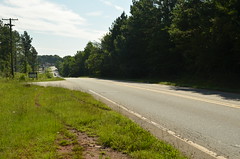Posts tagged ‘Ken Gonzales-Day’
Strategies for Remembering Trauma
When I was in Los Angeles a few of weeks ago, I explored Ken Gonzales-Day’s Lynching Walking Tour from his Erased Lynching series, 2002-2011. While journeying on this path through the El Pueblo and Civic Center areas with a print-out of the tour instructions, I was often struck by the lack of physical markers on the landscape. This brutal yet significant history involves multiple bodies. But the tour sites mask those bodies.
This experience made me return to my ruminations on how people memorialize trauma. Art about devastating historical events and other violent ordeals engages difficult issues of representation. How does one express the effects of suffering on the body? Is figurative art too literal? Is it too revealing? Does depicting a person’s body in pain remove her/his subjectivity? Is abstraction a more responsible choice? Or is abstraction insensitive? Does it use form to mask human feelings? What is the most appropriate way to represent trauma experienced by individuals versus groups? Is absence a more ethical strategy when dealing with violence involving spectacle and fetishization? What are the sociopolitical repercussions of these choices?
These are difficult questions to confront. Artists make personal choices here that sometimes become more complex when working for commissions. When the work is for outdoor public art, the stakes are even higher because the decision-making process involves more voices and a greater number of people will interact with the work.
This conundrum is central to the memorials of lynching violence that I study. For example, in Duluth, Minnesota, artists Carla Stetson and Anthony Peyton Porter, and memorial board members of the Clayton Jackson McGhie Memorial opted to include naturalistic figurative reliefs that restore the victims’ bodies to an intact state. Sculptor Carla Stetson even elevated the social status of each man by dressing the figures in middle-class attire instead of clothing resembling those of itinerant laborers. In contrast, in Waco, which is located in Central Texas, an area with an extremely high number of lynchings, residents have had trouble building consensus about commemorating this aspect of their history. While they haven’t established any outdoor artworks or markers to memorialize the lynchings, they did produce three resolution statements. Community members presented two of these at outdoor public gatherings.
The lack of physical forms commemorating lynching violence in the U.S. contrasts greatly with how we memorialize the Holocaust in our built environments. Artists memorializing the Holocaust sometimes employ abstraction as Joel Shapiro did in his Loss and Regeneration, 1993, Washington, D.C. However, many employ figurative art that depicts effects of pain on the body like Nathan Rapoport’s 1964 Monument to Six Million Jewish Martyrs in downtown Philadelphia or Elbert Weinberg’s Holocaust Memorial, 1979 in Wilmington, Delaware. While these works highlight anguish, the figures aren’t personalized. Instead of depicting particular individuals, these memorials present anonymous, stylized stand-ins to represent an ethnic group.
After I finished the Lynching Walking Tour, I walked into a park off N. Grand Avenue in the Civic Center area. I happened upon a memorial to genocide in the Ukraine (see photo at right). The artist and the committee obviously felt that stylized figurative art that features the body in a diminished condition was the most powerful way to communicate their message. Again, we have types instead of individuals. As I was looking at this structure, I felt that it was somewhat ironic to come across this memorial to violence that occurred in Europe after witnessing the lack of material commemorative signs to the violence that occurred on the streets of Los Angeles.




